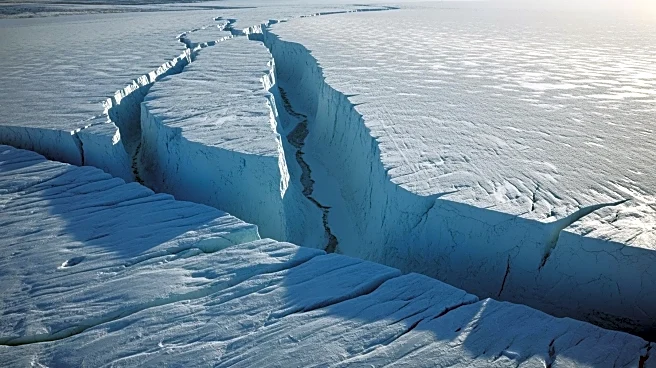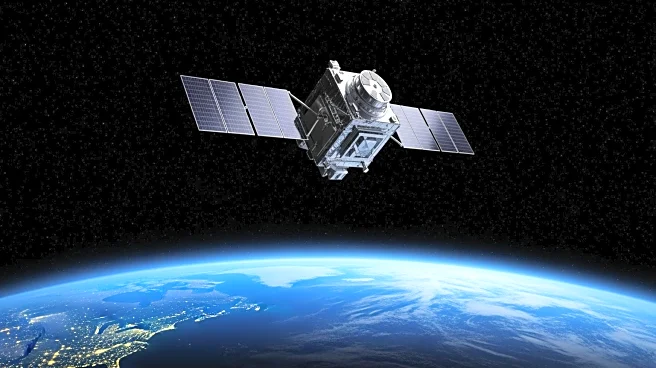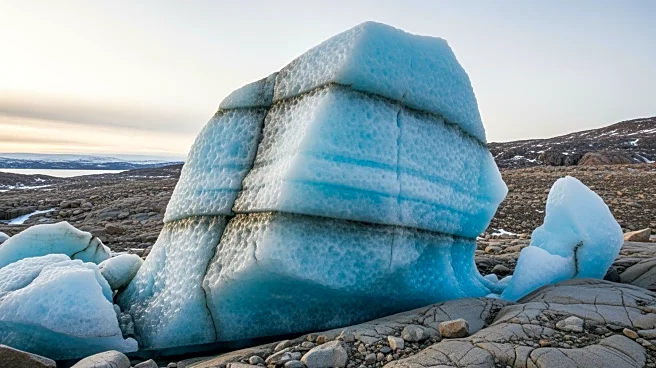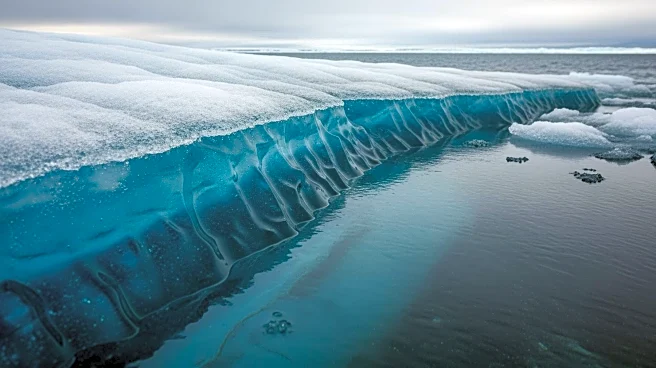What's Happening?
Researchers have mapped a vast network of 332 submarine canyons beneath Antarctica's ice, revealing a complex underwater landscape that influences ice dynamics and ocean circulation. The study, published
in Marine Geology, utilized high-resolution bathymetric data to document these canyons, some reaching depths of over 4,000 meters. The findings challenge existing sea-level rise projections, which often assume a flat Antarctic seafloor. The canyons serve as active conduits for heat and nutrient transport, affecting ice shelf melting and global climate behavior. The research highlights structural differences between East and West Antarctica, with implications for understanding ice sheet stability and vulnerability.
Why It's Important?
The discovery of these submarine canyons has significant implications for climate science and sea-level rise predictions. By influencing ice shelf melting and ocean circulation, these canyons play a crucial role in global climate dynamics. The study calls into question the accuracy of current models, which may underestimate the impact of Antarctic topography on ice sheet behavior. Understanding these canyons is essential for refining predictions about ice sheet retreat and global sea-level change, which are critical for climate policy and planning. The research underscores the need for more detailed mapping and modeling to improve climate forecasts.
What's Next?
The study's findings may prompt revisions to climate models and sea-level rise projections, incorporating the newly discovered canyon systems. Researchers may conduct further investigations to explore the canyons' impact on ice dynamics and ocean circulation. The development of scalable tools for mapping submarine features could enhance understanding of other glaciated regions, such as the Arctic. As climate change continues to pose global challenges, the scientific community is likely to prioritize research on Antarctic topography and its role in climate outcomes, potentially influencing policy decisions and mitigation strategies.
Beyond the Headlines
The research highlights the importance of interdisciplinary collaboration in addressing complex environmental challenges. By combining geomorphometric techniques with high-resolution data, scientists can gain insights into the intricate interactions between ice, ocean, and climate systems. The study also emphasizes the need for continued investment in polar research and mapping, as much of the Antarctic seafloor remains unexplored. Understanding these hidden landscapes is crucial for developing effective climate strategies and ensuring the resilience of vulnerable regions.












